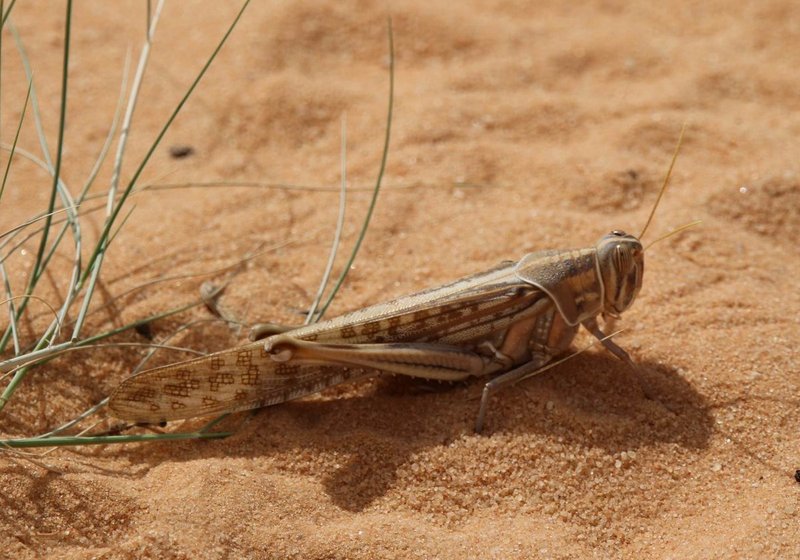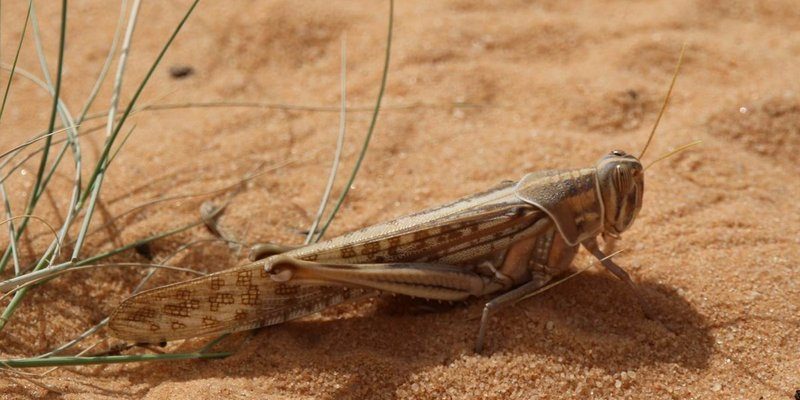
Studying locusts can feel like peeling an onion—each layer reveals something new and interesting. Researchers dive into their biology, ecology, and even how swarming behavior influences ecosystems. So, let’s take a closer look at how scientists have tackled the challenge of studying locusts and what they’ve discovered in the process.
The Biology of Locusts
Understanding the biology of locusts is like getting to know an athlete’s training regimen. It’s essential to grasp how they function and what makes them unique. The locust undergoes several life stages: egg, nymph (or hopper), and adult. Each stage brings its own set of characteristics and behaviors. For instance, nymphs are usually solitary but can become gregarious when conditions are right.
Locusts have a remarkable ability to change color and behavior based on their environment, a phenomenon called phase polyphenism. In simple terms, when they are in high-density populations, they turn from green and solitary to yellow-brown and swarming. Interestingly, this transformation isn’t just a cosmetic change. It affects their mating habits, diet, and social interactions. Understanding these biological shifts helps scientists predict when a locust outbreak might occur.
Moreover, studying their anatomy reveals how locusts survive in different environments. Equipped with strong wings and powerful hind legs, they can travel long distances in search of food and favorable conditions. By examining their physiology, researchers can learn how locusts adapt to extreme environments, making them a valuable subject in ecological studies.
Locust Swarming Behavior
Locust swarming is one of nature’s great wonders, often likened to a well-choreographed dance. But what triggers these swarms? Scientists have been eager to piece together the puzzle. It turns out that the swarming behavior is largely influenced by environmental factors, such as food availability and population density.
When food is plentiful, locusts gather in large numbers. The contact between individuals increases, leading to changes in behavior and morphology. This collective response is fascinating because it’s not just about feeding; it’s a survival strategy. Swarming allows locusts to overwhelm predators and exploit resources efficiently.
Additionally, researchers have developed models to predict swarming events based on climate conditions and food supply. These models are crucial for farmers and governments in planning for potential locust invasions, allowing them to take preventative measures in advance. It’s like having a weather forecast, but for locusts!
Impact on Agriculture
Locusts are infamous for their impact on agriculture, often leading to devastating crop losses. When they swarm, they can consume vast amounts of vegetation in a short time, causing food shortages and economic hardship. This reality has prompted scientists to study locusts not just to understand them but also to mitigate their effects.
Research into locust populations has led to the development of control strategies, including biological control methods and targeted insecticides. For example, scientists are investigating the use of natural predators and pathogens to control locust numbers without harmful chemicals.
Understanding the lifecycle and the environmental triggers of swarms is key for developing effective management strategies. This research is like tuning a fine instrument; when all parts work together, it can produce a harmonious balance between locust populations and agricultural health.
Locusts and Climate Change
Climate change poses a significant challenge for many species, including locusts. Changes in temperature and precipitation patterns can directly influence locust breeding and swarming behavior. Understanding how locusts adapt to these changes is crucial for predicting future outbreaks.
Researchers are keenly aware that as the climate shifts, locusts might thrive in new regions, potentially leading to agricultural challenges in areas that previously had little to no locust problems. Various studies have examined how rising temperatures can affect locust physiology and behavior, leading to increased reproductive rates in some species.
By studying the interplay between climate and locust behavior, scientists can better prepare for the future. It’s like trying to read the tea leaves; understanding possible outcomes can help in strategizing responses to potential threats.
Technological Advances in Locust Research
Technology has played a pivotal role in advancing the study of locusts. From drones to remote sensing, scientists are using innovative tools to track locust populations and monitor their movements. These technologies allow for real-time data collection and analysis, which is invaluable for effective management.
For instance, researchers can deploy drones to survey large areas of land quickly. This aerial view helps identify swarms and predict their potential impact on local agriculture. Using apps and other software, they can analyze environmental conditions and share data with farmers, enabling them to take timely action.
Moreover, genetic research has opened new doors in understanding locust behavior. By studying locust genes, scientists hope to uncover the genetic basis behind their swarming behavior. It’s like having a backstage pass to a concert—you get to see what makes the performance so special.
Future Directions in Locust Research
As scientists continue to investigate locusts, the future looks promising. New research initiatives are emerging, focusing on more sustainable and effective management strategies. The goal is to balance the ecological role that locusts play with the need for agricultural security.
One exciting area is the use of biotechnology to develop locust-resistant crops. By modifying crops to withstand locust feeding, researchers aim to reduce the economic impact of swarms. It’s like giving plants a protective armor they didn’t have before!
Additionally, as global connectivity increases, sharing knowledge and strategies across countries becomes vital. Collaborative efforts in locust research can lead to a more comprehensive understanding of these insects and how they interact with changing environments.
Let’s be honest, studying locusts isn’t just about understanding one species; it’s about learning how to live harmoniously with nature, even when it presents us with challenges.
In conclusion, the study of locusts offers a fascinating glimpse into the complexities of nature. From their biology and behavior to the impact of climate change and technological advances, researchers are uncovering layers of information that can help us better understand these remarkable insects. As we continue to learn, it’s clear that managing locust populations thoughtfully can lead to a healthier balance in our ecosystems.

